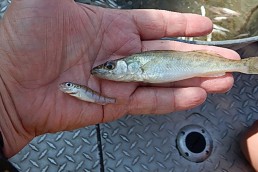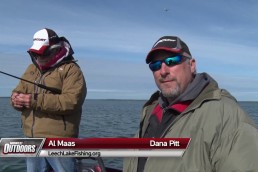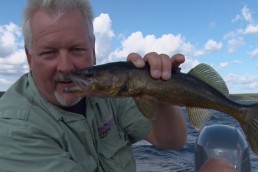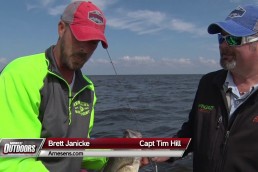Excellent Walleye and Perch Hatches in Lake Erie
SHARE THIS POST
The Lake Erie Fisheries Research Unit of the Ohio Division of Wildlife and the Ontario Ministry of Natural Resources announced in September that the walleye and yellow perch hatches—as determined by their Western Basin bottom trawls—look very favorable this year.
This news was expected, yet confirmation of angler observations was still welcomed. For months, rumors of cannibalistic walleyes with bellies full of their own species was reported by fish-cleaning houses during the summer. Recently, anglers targeting yellow perch have been catching multiple baby walleyes each trip.
According to the Ohio Division of Wildlife, by using the average of approximately 40 historical Western Basin sampling locations, walleyes had the second-best hatch in 20 years at 112 young-of-year fish per hectare—a metric measure of area equal to 2.47 acres (U.S.)—compared to the 20-year average of 27 per hectare.
Regular big hatches help promote big catches
Coupled with the big hatch in 2015, respectable hatches in 2014, 2010, 2007 and the huge hatch in 2003, anglers should continue having an easy time catching these popular gamefish.
Fishermen from all across the region visit Port Clinton, the “Walleye Capital of the World” and other ports in the Western Basin during winter, spring and early summer to find the species in the greatest numbers.
Due to summer water temperatures, walleyes migrate eastward through Ohio’s central Basin as far as Buffalo. They return to the Sandusky Sub-basin, then the western Lake Erie Islands and the Reef complex, in the fall and winter.
Yellow perch continue to produce near-or-above-average hatches in the Western Basin. For perch, this is the sixth year in a row of respectable hatches. The 2018 hatch, as calculated by the Ohio Division of Wildlife, was found to be 511 per hectare, compared to the 20-year average of 316 per hectare.
The Ontario Ministry of Natural Resources has indicated that their trawling data numbers, which will be released soon, are similar to the observations seen by Ohio’s fisheries biologists.
Are you enjoying this post?
You can be among the first to get the latest info on where to go, what to use and how to use it!
Weather that really beefs up walleye numbers
Successful hatches of walleyes and yellow perch appear to coincide with years of high water. These, apparently, place the Western Basin reefs at optimal depths.
Cooler springs that delay spawning also seem to correlate with better fry survival. Perhaps because of higher zooplankton presence after exhaustion of the walleye fry’s yolk sac. There is even more compelling evidence that egg growth, development and health is aided by long, cold winters for both species.
In the Central Basin, the re-occurrence of the “Dead Zone” under the thermocline impacts the accuracy of the trawling data taken in the historical stations. Biologists there must wait until late September to sample this section of the lake.
Otherwise, young-of-year fish populations are under-reported due to their avoidance of the oxygen-poor bottom layer of the water column where the trawl runs during this type of sampling.
Their young-of-year fish index data will be ready to share in October. Central Basin yellow-perch fishermen anxiously await news of the hatch results of this species. Ohio populations have weakened somewhat in recent years from Huron to Conneaut.
Local spawning success is more important to perch than walleyes. These homebodies are thought to remain close to their hatching sites throughout their lives.
Walleyes, on the other hand, migrate to their primary spawning sites in the Western Basin reefs and into the Maumee and Sandusky rivers before dispersing throughout the lake in the summer. Their population last spring was estimated to number over 41 million catchable fish, two years and older.
MWO
SHARE THIS POST
Did you enjoy this post?
You can be among the first to get the latest info on where to go, what to use and how to use it!
John Hageman
John Hageman was manager of Stone Laboratory, Ohio Sea Grant's Biology Station at Put-in-Bay, for 25 years and formerly a licensed Lake Erie ice-fishing guide. He is active with the Outdoor Writers of Ohio and several sportsmen's conservation organizations. He may be contacted at hageman.2@osu.edu.



